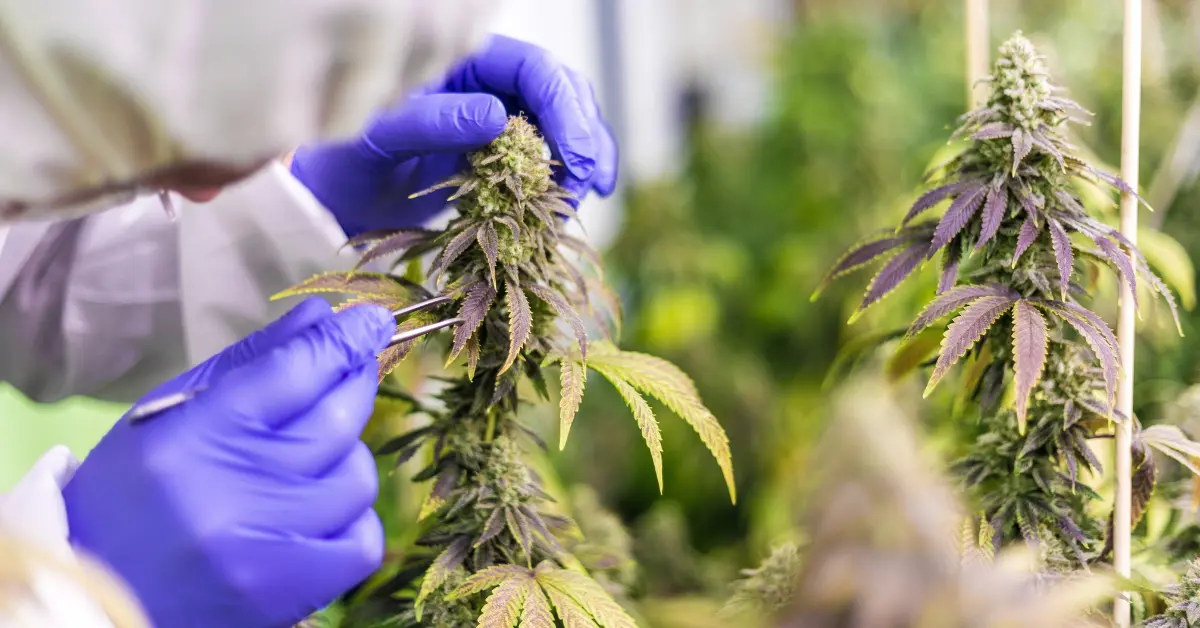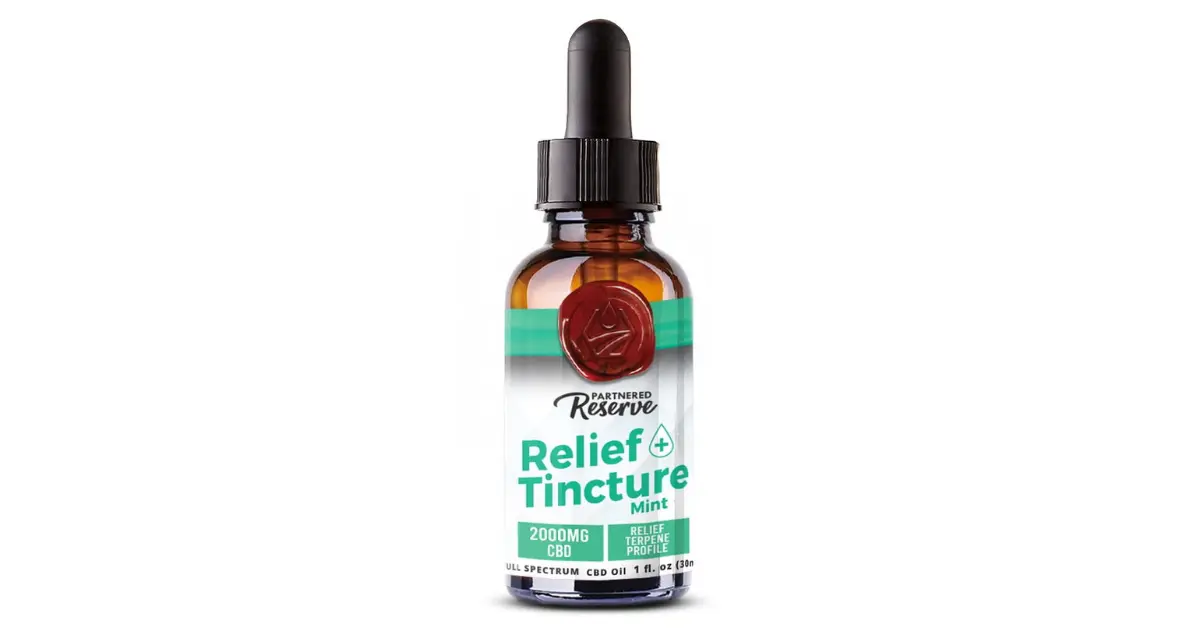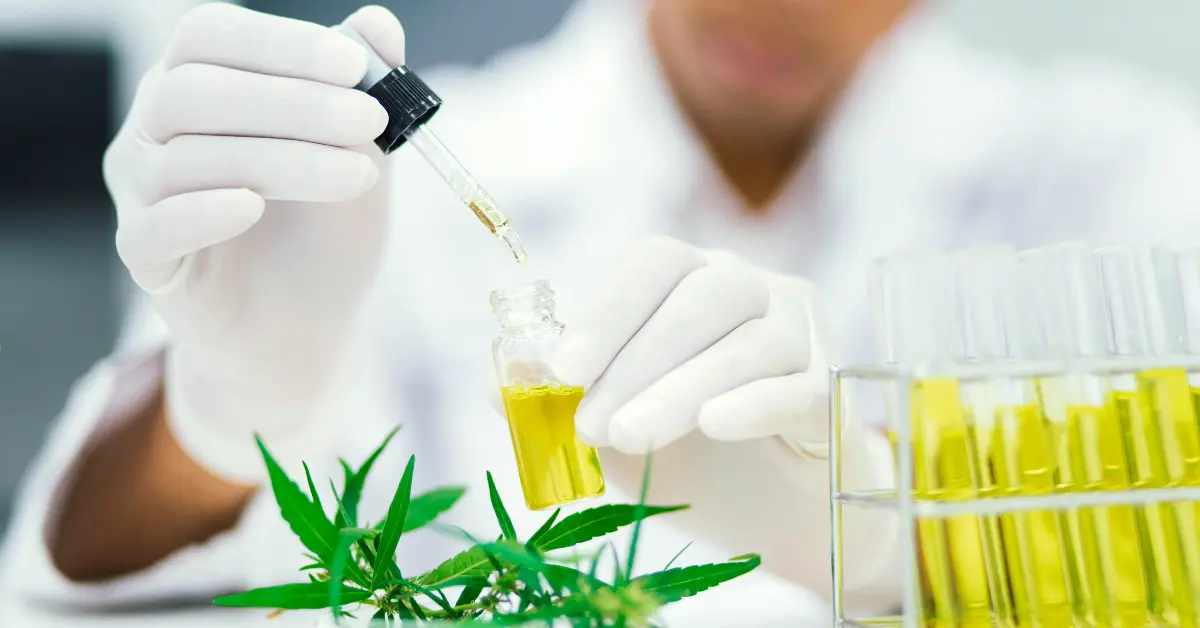When it comes to producing CBD products, the method used for extracting cannabinoids has a significant impact on the quality and safety of the final product. Consumers are becoming more selective, expecting transparency and superior formulations. If the extraction method is poorly executed or uses harsh chemicals, the final product may contain unwanted residues, inconsistent potency, or degraded compounds. To ensure the safest CBD oil, manufacturers must select techniques that capture cannabinoids effectively while also preserving their natural properties.
Decarboxylation: Activating Cannabinoids Before Extraction
In its raw form, the hemp plant primarily contains cannabinoids in their acidic forms, such as cannabidiolic acid (CBDA), which are not as readily absorbed or biologically active in the human body. Decarboxylation is the process by which these acidic cannabinoids are converted into their active forms—like transforming CBDA into CBD—through the application of controlled heat. This chemical reaction removes a carboxyl group from the molecule, releasing carbon dioxide and resulting in a more bioavailable compound. While some decarboxylation can occur naturally through curing and drying, optimal activation is achieved by precisely heating the milled hemp material before extraction. This step ensures that the extracted oil contains the highest possible concentration of active CBD, maximizing its therapeutic potential and value for consumers. Skipping or improperly executing decarboxylation can lead to extracts with lower potency and inconsistent effects. For manufacturers, integrating decarboxylation into their process is essential for delivering consistent, high-quality products that meet consumer expectations for efficacy and transparency. By prioritizing this step, producers can ensure their CBD products offer reliable benefits and superior performance.

Supercritical CO₂ Extraction: Process and Benefits
How It Works in Hemp Extraction
In supercritical extraction, carbon dioxide is brought to a state where it acts like both a gas and a liquid. This state occurs under specific pressure and temperature conditions, allowing CO₂ to penetrate plant material and dissolve targeted compounds like cannabinoids and terpenes. Once extraction is complete, reducing the pressure returns CO₂ to its gaseous state, leaving behind a clean extract. This method is beneficial for producers who prioritize chemical-free results. The CO2 extraction of hemp CBD eliminates the use of toxic solvents and leaves no residue, making it a popular choice among manufacturers who prioritize product purity.
Key Advantages
Unlike other processes that may strip away delicate elements, this method preserves important aromatic oils and minor cannabinoids. These retained components contribute to the entourage effect, believed to enhance CBD’s therapeutic value. Additionally, supercritical CO₂ extraction eliminates the introduction of foreign chemicals, thereby significantly enhancing the extract’s safety profile. This makes it a preferred choice for high-end formulations targeting health-conscious consumers. When comparing CBD oils extraction techniques, CO₂ consistently yields extracts with minimal post-processing.
Equipment Requirements
Implementing supercritical CO₂ systems involves a significant investment in specialized machinery. The CO2 extraction equipment used must tolerate high pressures and allow for precise control over temperature and flow rates. These systems often feature multiple chambers for separating, collecting, and recompressing the gas. Although the initial costs are higher compared to simpler setups, CO₂ extraction allows producers to scale up operations without compromising quality. Larger operations can automate portions of the process, improving throughput while reducing labor costs.
Benefits of CO₂ CBD Extraction for Premium Products
For companies targeting premium product segments, the CO₂ method aligns well with quality-first business models. By avoiding exposure to harsh chemicals and minimizing thermal degradation, this process ensures the extract retains its natural profile. The benefits also include better flavor, smoother texture, and a broader cannabinoid diversity. These features are essential for full-spectrum and broad-spectrum offerings.
Ethanol Solvent Extraction: Process and Trade-offs
The Ethanol CBD Extraction Process
Understanding the process provides insight into one of the most efficient and widely used methods for isolating cannabinoids from hemp biomass. Below are the key steps:
- Biomass Preparation: The initial phase of ethanol CBD extraction begins with preparing the raw hemp biomass. During this step, harvested hemp plants are dried and then mechanically milled into a coarse powder or uniform texture. This grinding process significantly increases the surface area of the plant material, allowing ethanol to access and dissolve cannabinoids more efficiently during the soaking stage. Uniformity in particle size ensures even exposure to the solvent, which contributes to a more consistent and complete extraction. Additionally, removing large stems or impurities at this stage helps prevent blockages and minimizes the carryover of undesirable materials, which could complicate later refinement steps. Proper preparation also stabilizes the moisture content of the plant matter.
- Solvent Soaking: Once the hemp material is uniformly ground, it is immersed in food-grade ethanol for a specified duration, often under controlled temperatures. The ethanol acts as a powerful solvent that penetrates plant cell walls and dissolves cannabinoids, terpenes, and other bioactive compounds. Depending on the desired extract profile, this soaking may occur at room temperature, sub-zero temperatures, or even be optimized through agitation and timed exposure. Cold ethanol is often preferred to minimize the extraction of chlorophyll, which can impart a bitter taste and dark color to the final product. The solvent quickly saturates the plant matrix, resulting in a cannabinoid-rich solution that suspends a variety of beneficial compounds. Factors such as soak time, solvent-to-biomass ratio, and ethanol purity significantly influence the efficiency and selectivity of the extraction process. This step is where the bulk of the plant’s therapeutic value is captured, and executing it properly ensures a rich, full-spectrum output.
- Separation: After ethanol has sufficiently soaked the hemp biomass, the mixture must be separated to isolate the cannabinoid-rich solution from the spent plant matter. This step is typically accomplished through filtration systems, which can range from simple mesh screens to advanced centrifugal filtration setups designed to handle industrial volumes. The primary objective is to remove residual solids that could otherwise interfere with subsequent refinement stages.
- Solvent Recovery: This is usually achieved using specialized equipment like rotary evaporators, falling film evaporators, or vacuum ovens, each designed to apply controlled heat and pressure to gently evaporate ethanol without degrading sensitive compounds. The process is conducted in closed-loop systems that capture and condense the ethanol vapor, allowing it to be reused in future extractions, which promotes both sustainability and cost efficiency. Careful calibration of temperature and pressure ensures that cannabinoids remain intact and bioactive while the ethanol is effectively separated. This phase requires technical expertise to prevent overheating, which could degrade terpenes or lead to loss of potency.
- Crude Oil Refinement: The final stage of ethanol CBD extraction involves purifying the crude oil to improve its clarity and flavor profile. It commonly includes winterization, which involves chilling the crude extract in ethanol at sub-zero temperatures to cause fats, waxes, and other unwanted compounds to precipitate out. These solids are then removed through fine filtration. For further refinement, distillation is employed, utilizing variations such as short-path or wiped-film techniques to isolate cannabinoids from residual impurities by taking advantage of their distinct boiling points. These methods enhance product purity without compromising active compound integrity.
Each step plays an integral role in shaping the extract’s quality and therapeutic potential. By understanding the nuances of each stage, manufacturers and consumers alike can better appreciate the complexity behind the finished product.
Key Strengths
Ethanol-based extraction is recognized for its rapid turnaround times and ability to process large volumes of raw hemp. Compared to other methods, this process offers faster cycle times, which is especially important for companies looking to meet growing market demand. Ethanol extraction can be adjusted more easily based on production needs. This approach often serves as a stepping stone before investing in more advanced techniques. The best extraction method for CBD may vary depending on financial resources and speed requirements, and ethanol remains a strong candidate in this regard.
Steam Distillation: Traditional Process and Limitations
This is one of the oldest and most traditional methods used to extract essential oils from botanical materials, including hemp. In this process, water is heated to generate steam, which is then passed through the hemp plant material. The heat and moisture from the steam help to break down plant structures and release volatile compounds, including CBD oil, into the vapor phase. The resulting mixture of steam and oil vapors is then condensed back into a liquid. Because oil and water do not mix, the CBD oil separates from the water and can be collected. Historically, steam distillation has been valued for its simplicity and minimal reliance on chemical solvents. This makes it an accessible option for small-scale producers or those seeking a more natural extraction method. The equipment required is relatively straightforward, often involving little more than a boiler, a plant chamber, and a condenser. However, while steam distillation is effective for extracting certain essential oils and terpenes, it presents several significant drawbacks when used for CBD extraction.
One of the main limitations of steam distillation is its inefficiency in yielding CBD-rich oil. The process often leaves a substantial portion of cannabinoids behind in the plant material, resulting in lower extraction yields compared to modern methods, such as CO₂ or ethanol extraction. Additionally, the high temperatures required to generate steam can degrade sensitive cannabinoids, including CBD, and other beneficial compounds. This thermal degradation can reduce the potency and therapeutic value of the final extract. As a result, steam distillation is generally not recommended for producing high-quality CBD oil intended for premium or therapeutic applications.

COil-Based Extraction: Safe and Accessible CBD Extraction
Oil-based extraction is a straightforward and accessible method for obtaining CBD from hemp, making it particularly appealing for small-scale producers, home enthusiasts, and those prioritizing safety in their extraction process. This technique involves using food-safe oils, such as olive oil, coconut oil, or hemp seed oil, as the solvent to extract cannabinoids and other beneficial compounds from the plant material. The process typically begins by gently heating the decarboxylated hemp to activate its cannabinoids, then combining it with the chosen oil and maintaining a low, steady temperature for several hours. Over time, the cannabinoids and terpenes infuse into the oil, creating a full-spectrum extract that can be used directly or as a base for tinctures, edibles, and topicals.
One of the primary advantages of oil-based extraction is its exceptional safety profile. Unlike methods that rely on chemical solvents or pressurized gases, food-safe oils pose minimal risk of toxic residue or hazardous reactions. This makes oil extraction especially suitable for individuals seeking a clean, natural approach to CBD production, whether for personal use or small-batch, artisanal products. The simplicity of the process also means that it requires little specialized equipment, making it highly accessible for those without access to industrial facilities.
CO₂ vs. Solvent Extraction: Head-to-Head Comparison
CBD Purity Comparison
When comparing extraction techniques, purity is a critical consideration. CBD purity comparison between CO₂ and ethanol methods reveals noticeable differences in the final product. CO₂ extraction typically yields cleaner extracts with fewer byproducts, largely because no additional solvents are required. This method yields minimal post-extraction purification, thereby maintaining the integrity of the compounds. Ethanol-based extraction, while efficient, often brings residual alcohol that must be removed through further processing.
Differences in CBD Extracts
The choice of extraction technique influences not only chemical composition but also the sensory experience of the end product. CO₂-extracted oils tend to offer a broader range of cannabinoids and terpenes. In contrast, ethanol extraction may diminish these elements, especially during post-processing stages such as winterization and distillation. While ethanol-based extracts can be just as potent in terms of CBD content, they often lack the nuanced flavor or aroma that full-spectrum consumers seek. Choosing the right method depends heavily on the desired consumer experience and the branding strategy behind the product.
Impact on Product Formats
Different products require extracts with specific characteristics, such as viscosity or flavor neutrality. Let’s explore how extraction methods align with various product formats:
- Tinctures: A well-crafted tincture must offer a smooth mouthfeel and minimal bitterness. This makes CO₂ extraction the preferred method for tinctures, as it produces cleaner, terpene-rich oils with fewer contaminants such as chlorophyll or plant waxes. Because the process uses pressurized carbon dioxide without the need for chemical solvents, it’s ideal for consumers seeking natural and minimally processed products. The preservation of volatile compounds also enhances aroma and flavor, aligning with the expectations of wellness-focused users. The molecular integrity retained through CO2 extraction for hemp supports the entourage effect, where multiple cannabinoids and terpenes interact to enhance therapeutic outcomes. Tincture formulations benefit from these nuanced profiles, offering consumers an enjoyable experience with each dose.
- Gummies: Edibles, particularly gummies, present a unique challenge for extract compatibility due to the importance of flavor masking and ingredient uniformity. Unlike tinctures, which benefit from strong terpene profiles, gummies require extracts that can be seamlessly integrated into a sweet or fruity base without imparting harsh or herbal notes. In this context, ethanol-extracted oils often provide a practical solution. These extracts can be further refined to remove excess waxes and chlorophyll, resulting in a relatively neutral flavor and smooth consistency that won’t compromise the texture of the edible. The ethanol process is also more forgiving when it comes to producing broad-spectrum or isolate-rich extracts that meet dosage precision needs in mass production.
- Distillates: Distillates are highly concentrated cannabinoid extracts that are often used in vape cartridges, topicals, and capsules. These products demand exceptionally pure oils with specific viscosity and potency characteristics. Both CO₂ and ethanol extraction methods can produce distillates, but they differ in efficiency and refinement requirements. CO₂ extracts, though initially cleaner and more terpene-rich, may require fewer additional steps to achieve distillate quality due to their low solvent residuals and high cannabinoid preservation. On the other hand, ethanol-derived extracts often undergo more rigorous post-processing, such as winterization and short-path distillation, to remove fats, waxes, and chlorophyll. Vape formulations in particular benefit from the consistent cannabinoid concentration and reduced impurity levels that distillates provide. Topicals, which require smooth, non-greasy bases, also rely on purified distillates to prevent skin irritation and ensure easy absorption.
Understanding how extraction affects end products enables producers to tailor processes for target markets.
Automation in Extraction and Testing
Automated technologies are transforming the CBD extraction and testing landscape by improving consistency, efficiency, and scalability across the industry. In modern extraction facilities, automation is increasingly used to control key parameters during processes like CO₂ or ethanol extraction. Automated systems can precisely manage these variables in real time, reducing the risk of human error and ensuring each batch meets exacting quality standards. This consistency is especially valuable for manufacturers aiming to produce large volumes of CBD oil with uniform cannabinoid profiles. In testing, automation is streamlining sample preparation and analysis. Robotic liquid handlers, for example, can prepare multiple samples simultaneously, minimizing cross-contamination and expediting the workflow.
Selecting an Extraction Service Provider
When outsourcing CBD extraction, choosing the right service provider or toll processor is critical for ensuring product quality, regulatory compliance, and brand reputation. The selection process should start with a thorough assessment of the provider’s expertise and technical capabilities. Look for companies with a proven track record in cannabinoid extraction and a clear understanding of your desired product specifications. Certifications are non-negotiable: reputable providers will hold credentials such as ISO 9001, cGMP (Current Good Manufacturing Practice), and FSMA (Food Safety Modernization Act) compliance, which demonstrate adherence to rigorous safety and quality standards. Additionally, if you are marketing organic products, ensure your partner has recognized organic certifications. Quality assurance programs are equally important; a reliable provider should have transparent protocols for product testing, traceability, and batch consistency, along with robust documentation practices.
Choosing the Best CBD Extraction Method for Your Needs
Factors to Consider
Scale is one of the most significant factors, as smaller operations may benefit from lower-cost ethanol systems, while larger producers might lean toward CO₂ systems for their consistency and clean output. Compliance requirements must also be considered, particularly in regions with strict guidelines on residual solvents or THC limits. As mentioned, the desired cannabinoid spectrum can influence which technique is best aligned with the production goals. These factors together determine not only feasibility but also long-term viability. In optimizing CBD oil potency, matching the method to the intended extract profile helps quality control across batches.
Aligning Extraction Method with Consumer Expectations
Today’s consumers are increasingly discerning, often looking beyond the label to understand how products are made. Extraction transparency has become a key selling point, with many buyers favoring clean, solvent-free options that align with natural health values. Brands seeking to establish loyalty must consider how their extraction method aligns with customer priorities. The benefits of CO2 CBD extraction shape customer perception and influence purchasing decisions. Aligning your approach with market expectations is crucial for maintaining relevance in a competitive environment.
Future Trends in Hemp Oil Processing
International markets are setting higher standards for traceability and environmental responsibility. This global shift is pushing manufacturers to adopt more efficient technologies. Innovations like integrated analytics, AI-guided process control, and intelligent energy systems are shaping the next wave of hemp oil processing. These advancements are helping to standardize production across borders, paving the way for greater product uniformity and safer consumer options. Companies that embrace these changes early are better positioned to meet evolving regulatory frameworks and capture new market segments. Staying ahead of the curve in both technology and compliance is crucial for achieving long-term growth in the competitive CBD market.
Continual innovation is the driving force behind safer and high-quality CBD extraction. As new demands arise from both consumers and global regulators, manufacturers must evolve by integrating advanced tools, sustainable practices, and smarter workflows. Embracing technologies that enhance cannabinoid preservation and minimize energy consumption enables companies to deliver reliable, top-tier products with a competitive edge. In the evolving discussion around how to extract cannabinoids, it’s clear that excellence lies in adaptability. Forward-thinking producers who invest in future-ready extraction methods will help shape the next generation of trusted CBD solutions.




